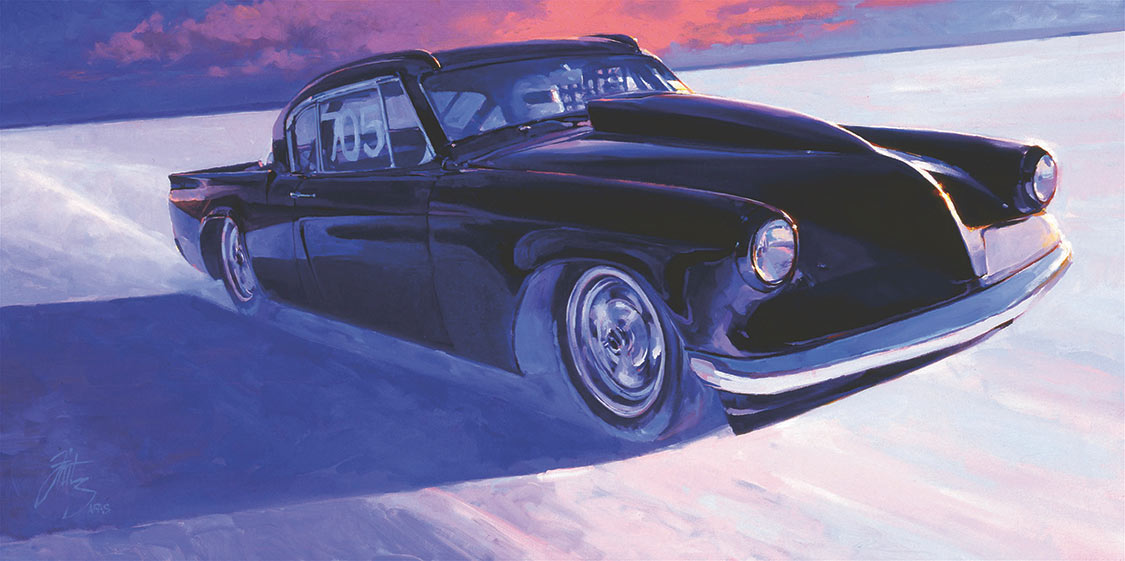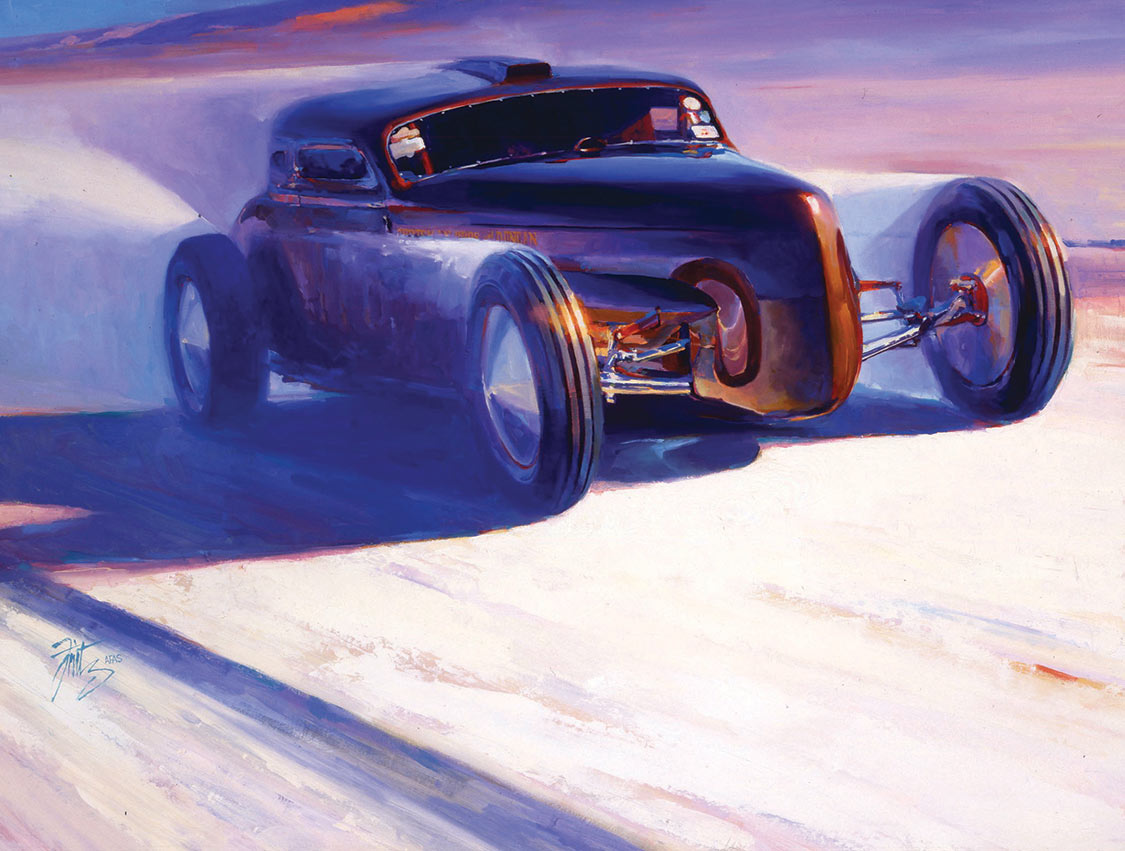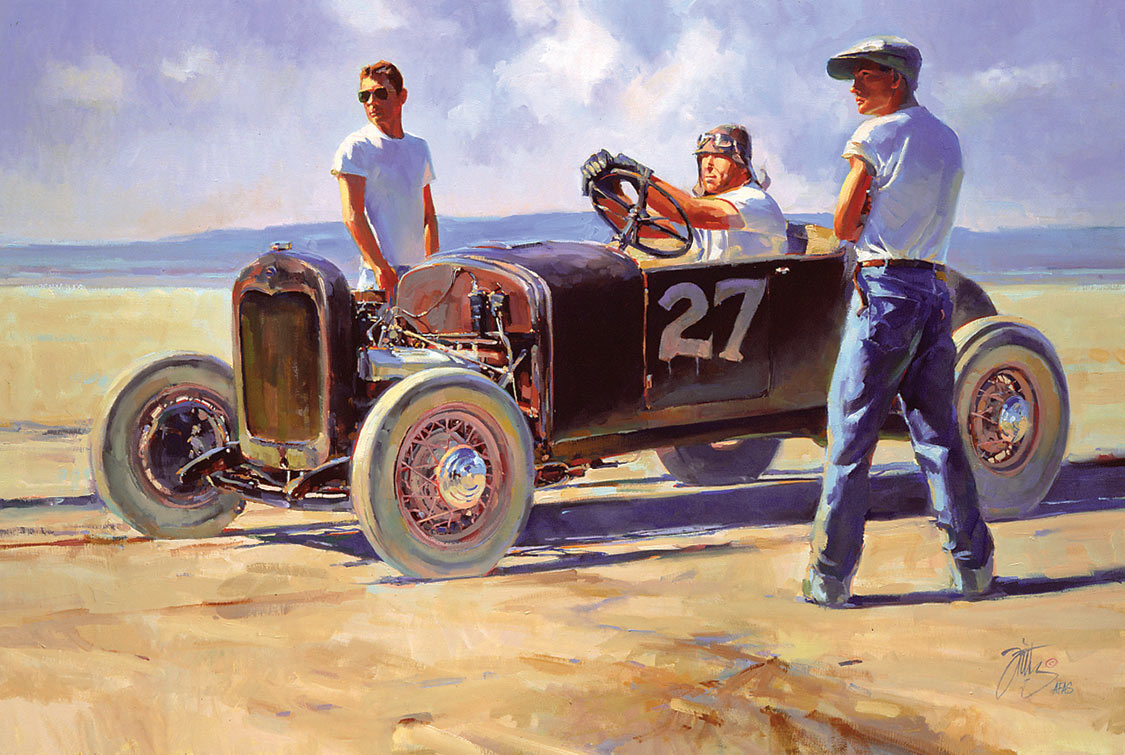James Maxwell June 19, 2022 All Feature Vehicles
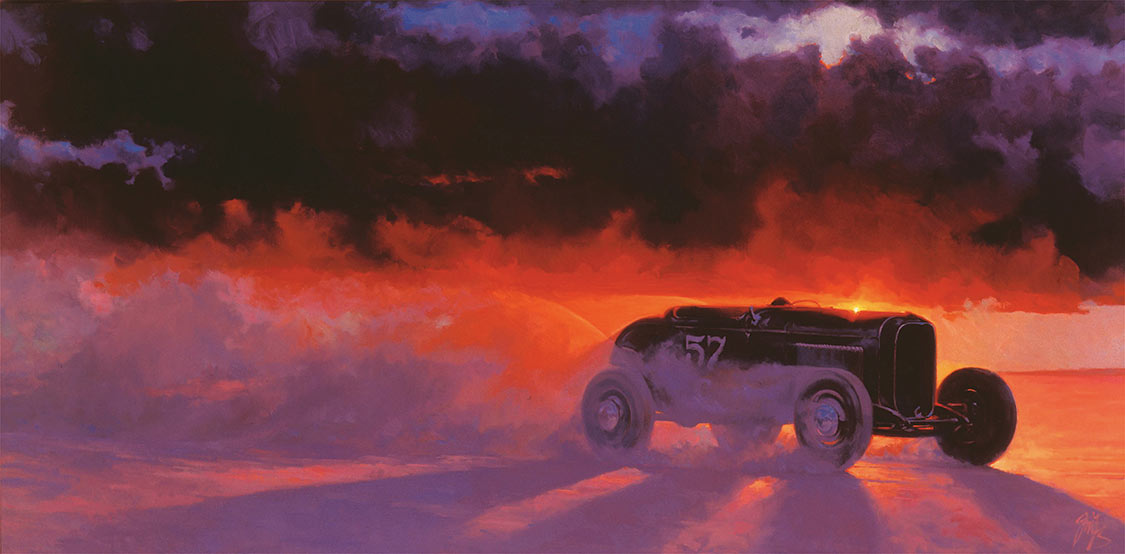
It all started when his mom brought home a paint-by-number kit. Young Tom Fritz was instantly hooked on painting and the wonderful smells of the oil-based paints. Prior to that he was pretty handy with crayons, pencils and ink markers of all types. “Since as early as I can remember, I drew on everything, everywhere,” Fritz recalls. “It was so fascinating to me. It was like TV, except I was in control. And people would respond. I drew on the underside of chairs and tables, on my PF Flyers shoes, on two-by-fours in the garage, on my drawing blotter, on the wall in the closet, on the inside lids of game boxes and in newspapers. Once I discovered this cool thing I could do, I couldn’t put it down.”

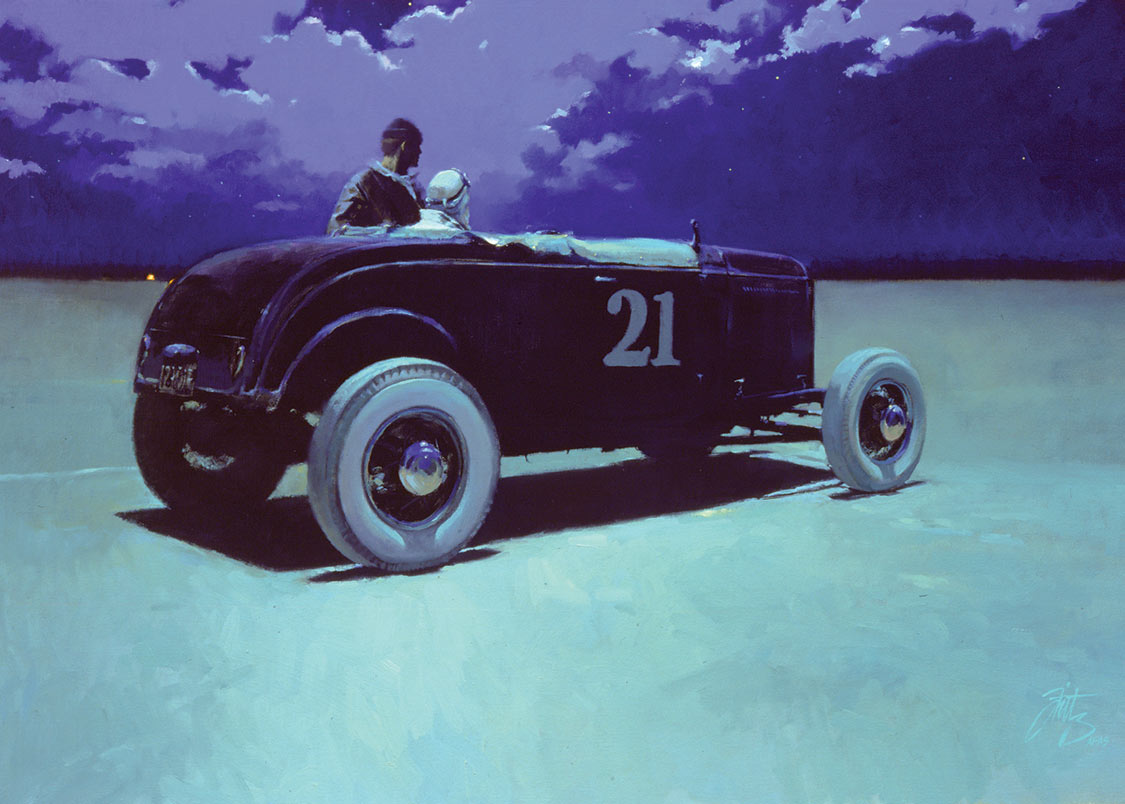
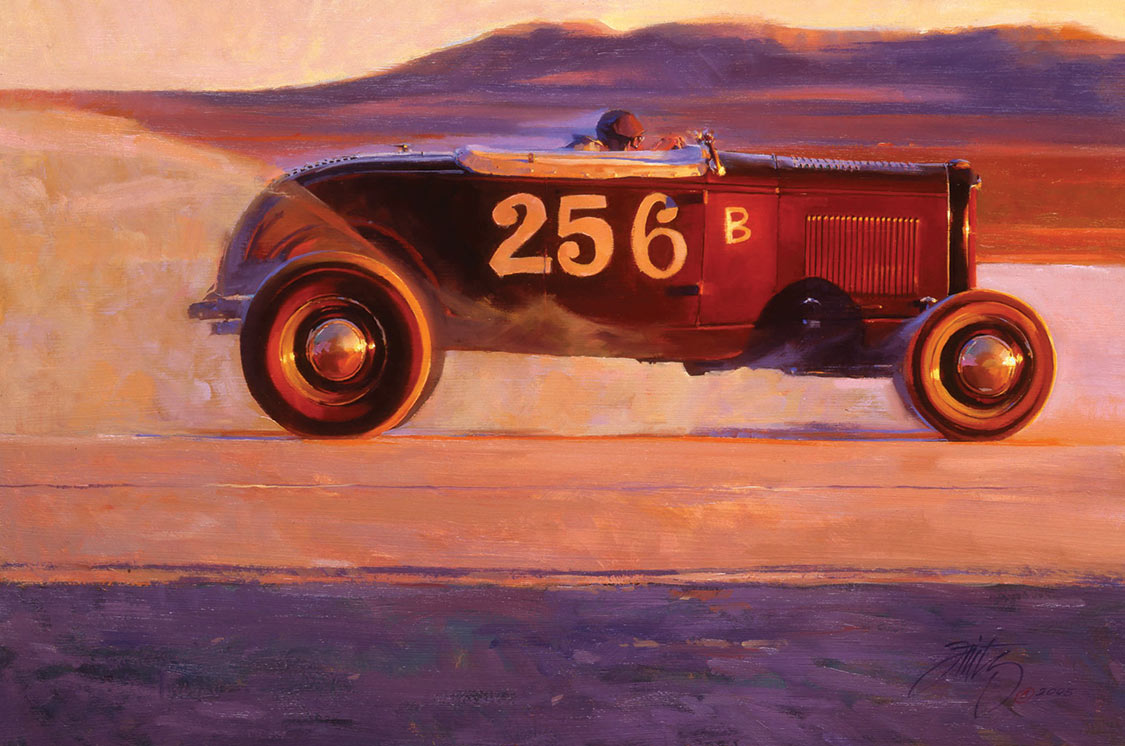
The love affair with cars started at an early age as well for the kid who grew up in the San Fernando Valley (Southern California). “There was so much I found intriguing about cars: They were big; they were the embodiment of raw adventure,” says Fritz. “You climbed up into them and always wound up going to all sorts of strange, new places with your folks. You were encapsulated in an environment like no other in your sphere. It had its own unique motions, design elements, textures and sounds. You always ate ‘fun’ food in a car. The windshield wipers were hypnotizing. The glove box was a treasure chest full of the interesting and unusual. There was always coin to mine under the floor mats. You, and you alone, were master of the dome light. The cigarette lighter was like the obelisk in ‘2001: A Space Odyssey’—it held magical power—it could be stone cold one moment, and the next moment it could make the end of pop’s cigarette burn. And how did pop know when that knob was ready to make fire? I used to stand right next to the garage door when the old Chevy was backing out just so I could sniff the exhaust fumes. I’d hang out the window at the gas pump just to smell the ethyl.”
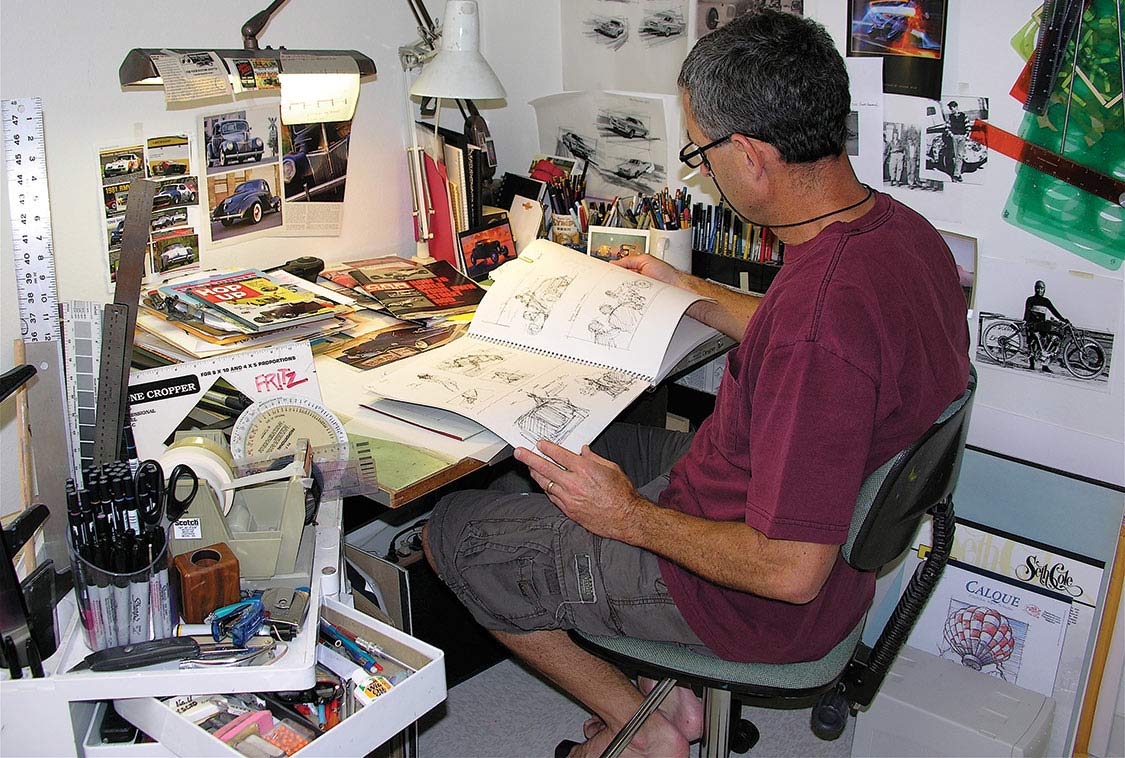
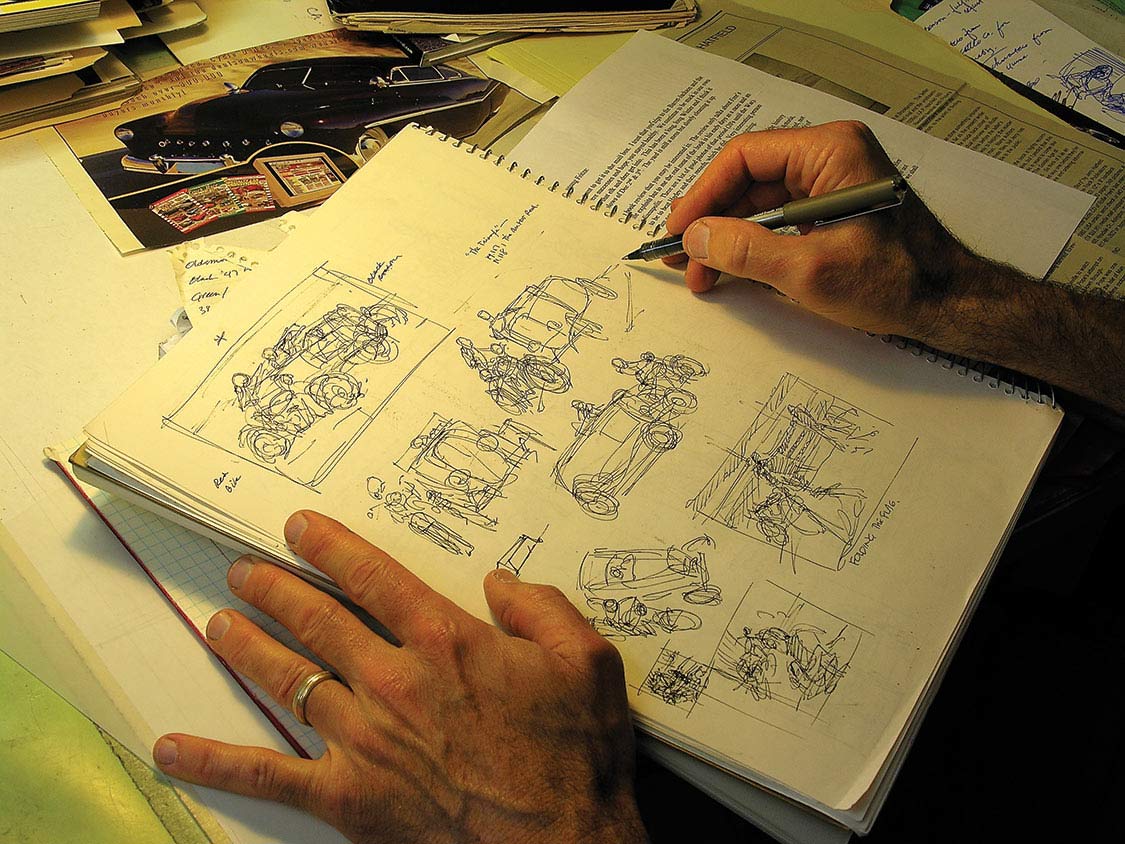
Going from being a kid with a paint-by-numbers kit to a world-renowned automotive artist took some time and an education. Fritz earned his Bachelor’s degree in Illustration from California State University, Northridge and worked as a commercial artist in the defense industry for more than 25 years before risking it all to become a full-time automotive artist.
One day when he was a young man, he was working on the brakes of an old GMC pickup truck (which he still owns to this day) in his driveway. An older gentleman from the neighborhood happened to pass by and the two started talking. After shooting the breeze in typical car-guy fashion, Fritz asked the man, who’s name was Otis Smith, about hot rodding’s early days. Fritz asked about dry lake bed racing from the early, pre-World War II days.
You were encapsulated in an environment like no other in your sphere. It had its own unique motions, design elements, textures and sounds.
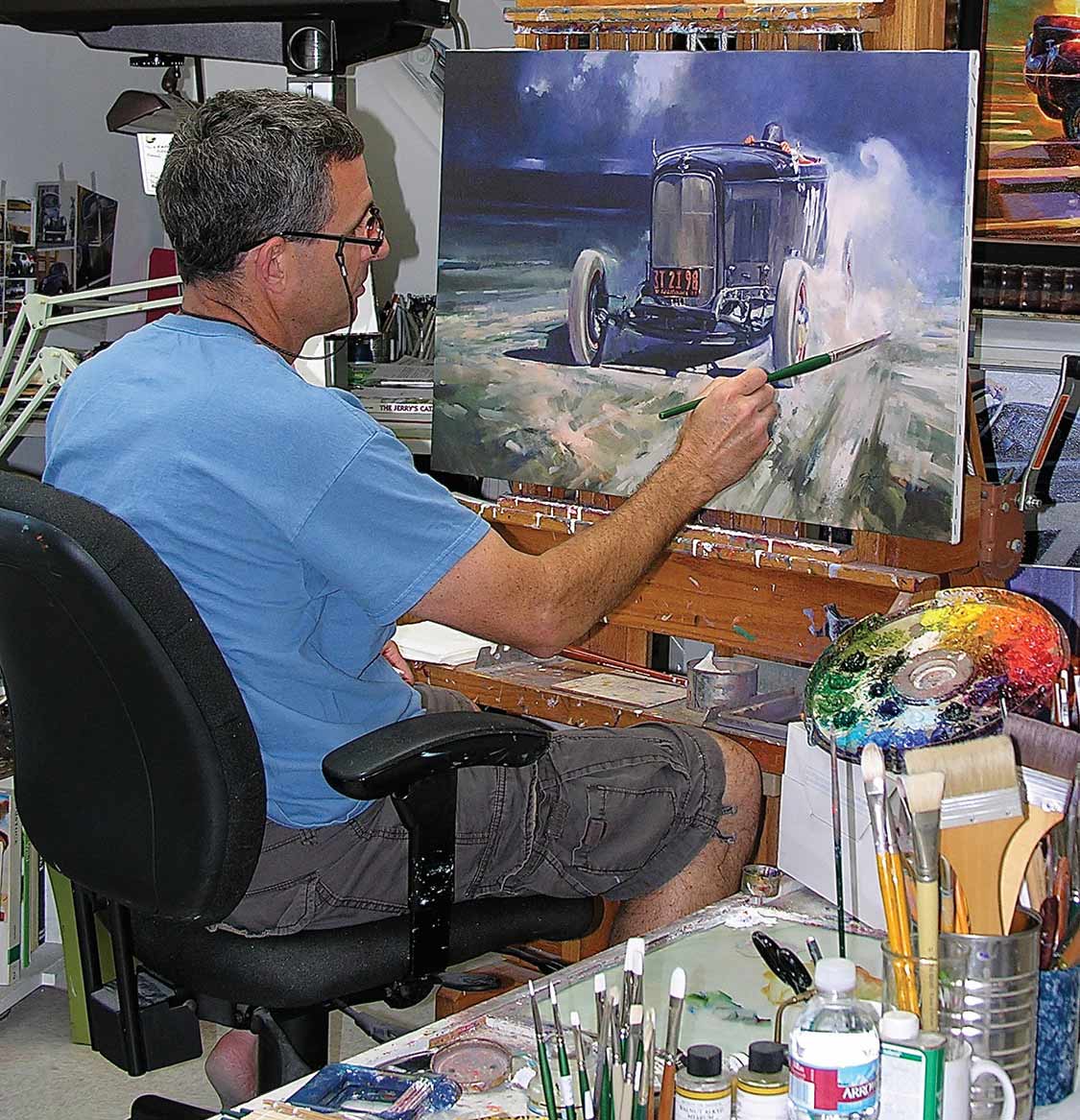
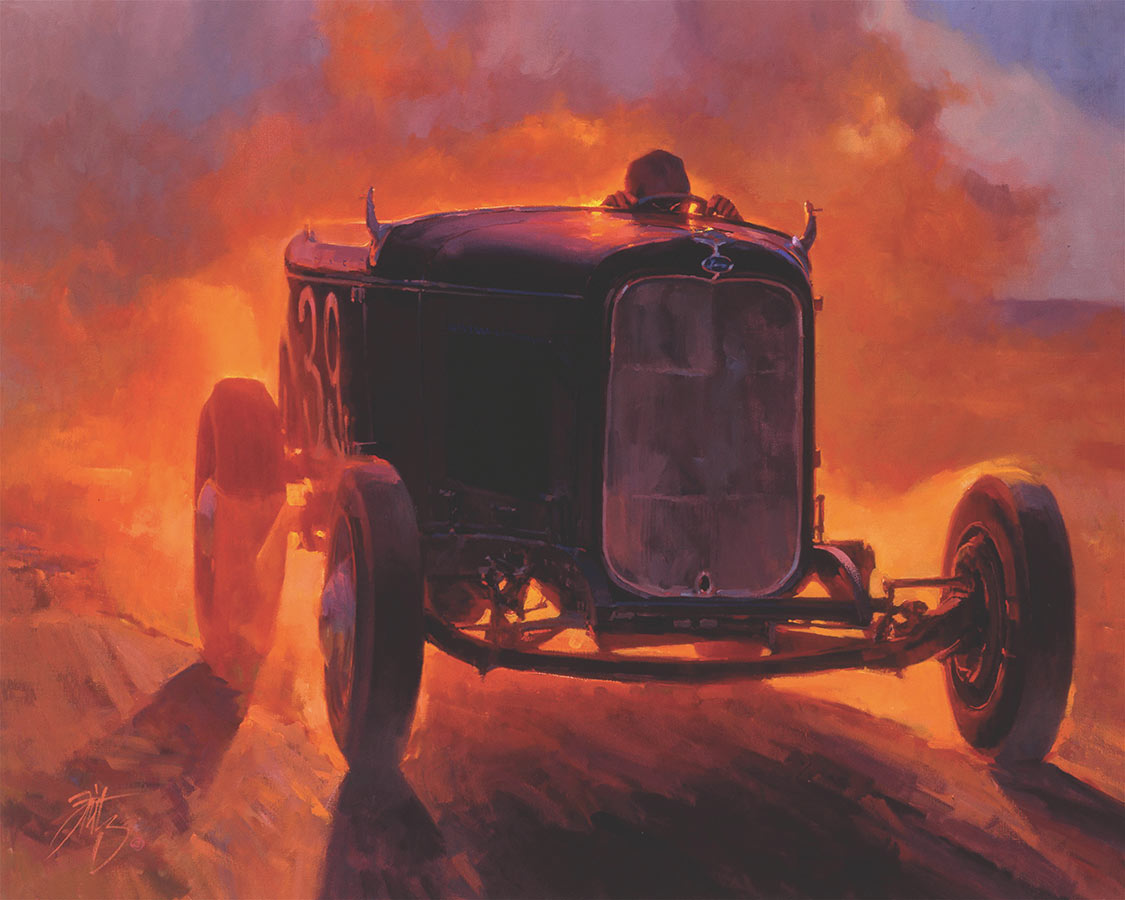
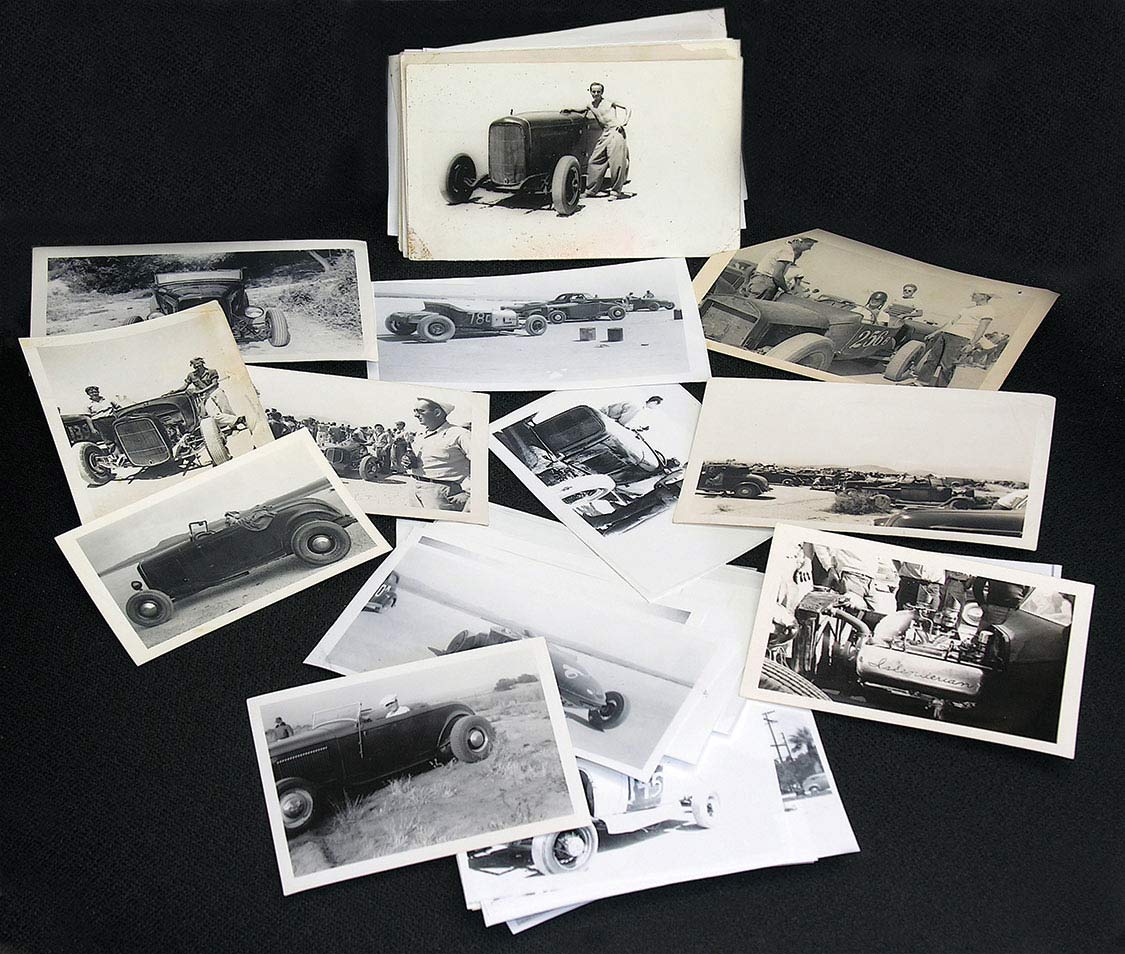
Smith shared that in his earlier years he raced on the dry lake beds of California in a ’29 Ford roadster. When Fritz perked up with interest, Smith, who had been a member of the Gophers Car Club back in the day, told him lots of stories and returned later with a shoebox full of original black-and-white photos that he generously gave to his super-interested young neighbor. This treasure box helped Fritz get the sparks flying for his own interest in dry lake bed activities, not to race a car himself, but to create artwork. With the fabulously rare vintage photographs he now possessed, he could create accurately detailed artwork.
When asked about what his greatest lesson was during his formal art education at university, his reply was simple and straightforward, “You needn’t reinvent the wheel. In school, you broaden your understanding and allow yourself to perceive things you haven’t yet thought of or already combined in your own mind, then lock-in and focus and translate your vision outward.
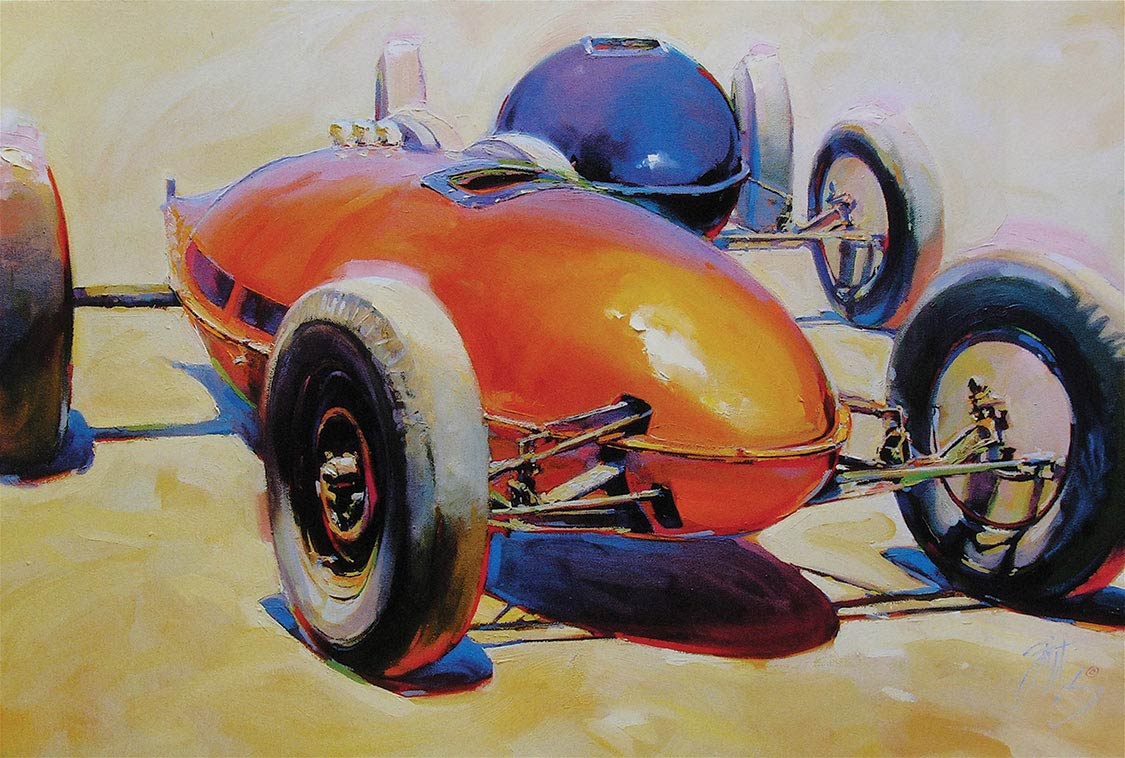
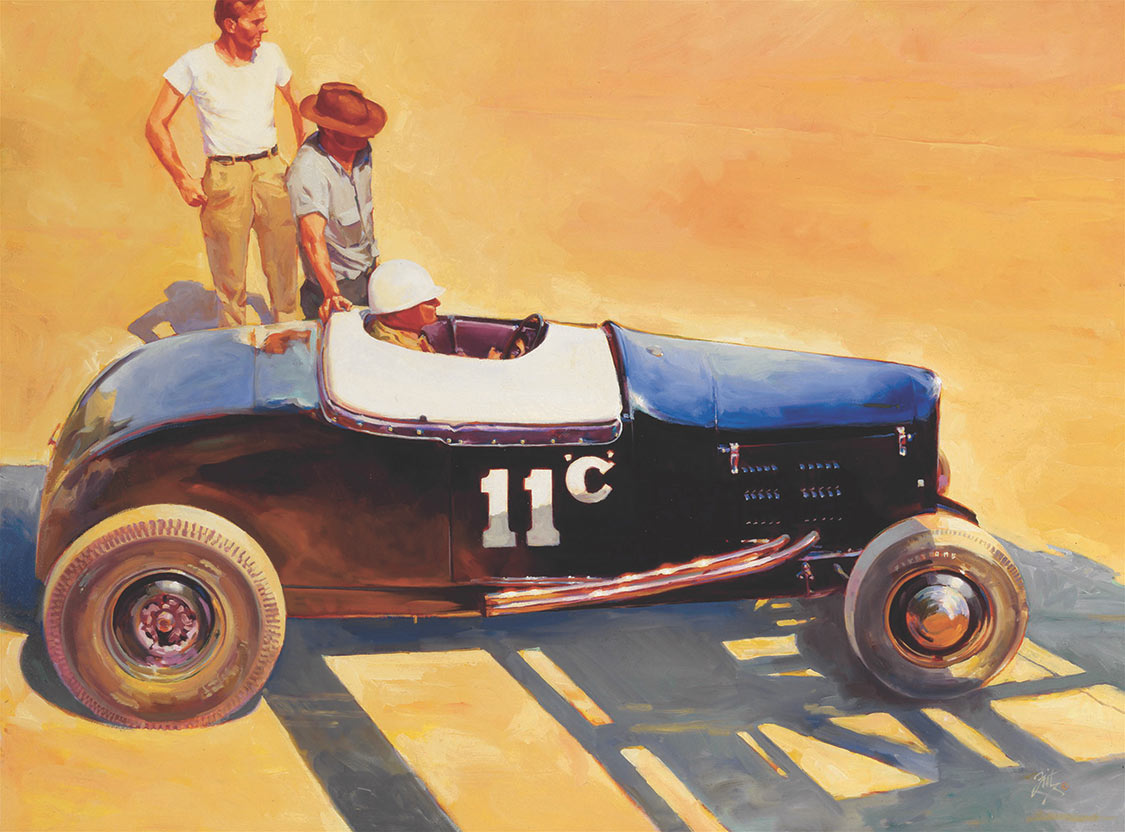
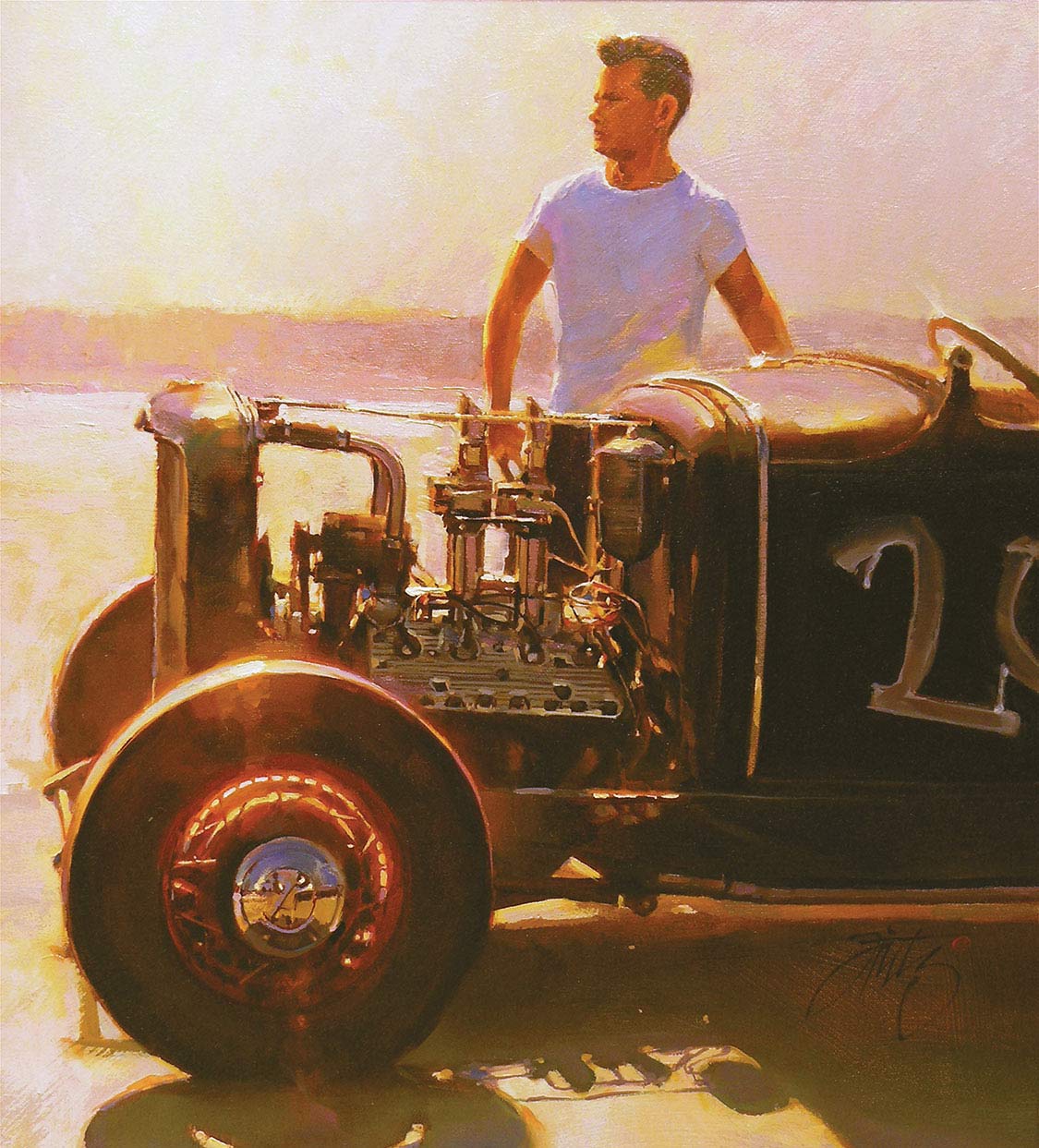
“As far as preparing me for working as a professional artist, I’ll just say it was a springboard, a foot in the door. I left with a portfolio the size of Rhode Island that instantly labeled me as a student fresh out of school. Something else about school, it taught me about maintaining my sanity. It taught me perseverance. Looking back, I would say school caused me to develop an approach, the ability to address a problem and develop visual solutions.”
Today, Fritz still digs the smells of oil-based paint just like when he was a kid. It was a pleasure visiting with him in is studio, and everywhere you look there are cool photos, drawings and notes about cars, motorcycles and trains as well as landscape and background reference images of every description.
“I’m still waiting to grow up, still like to draw cars. I was doing this stuff when I was a kid on scraps of paper, and they would choke up my desk drawer…it just evolved into this. It’s who I am, still trying to make a three-dimensional reality out of a two-dimensional surface.”
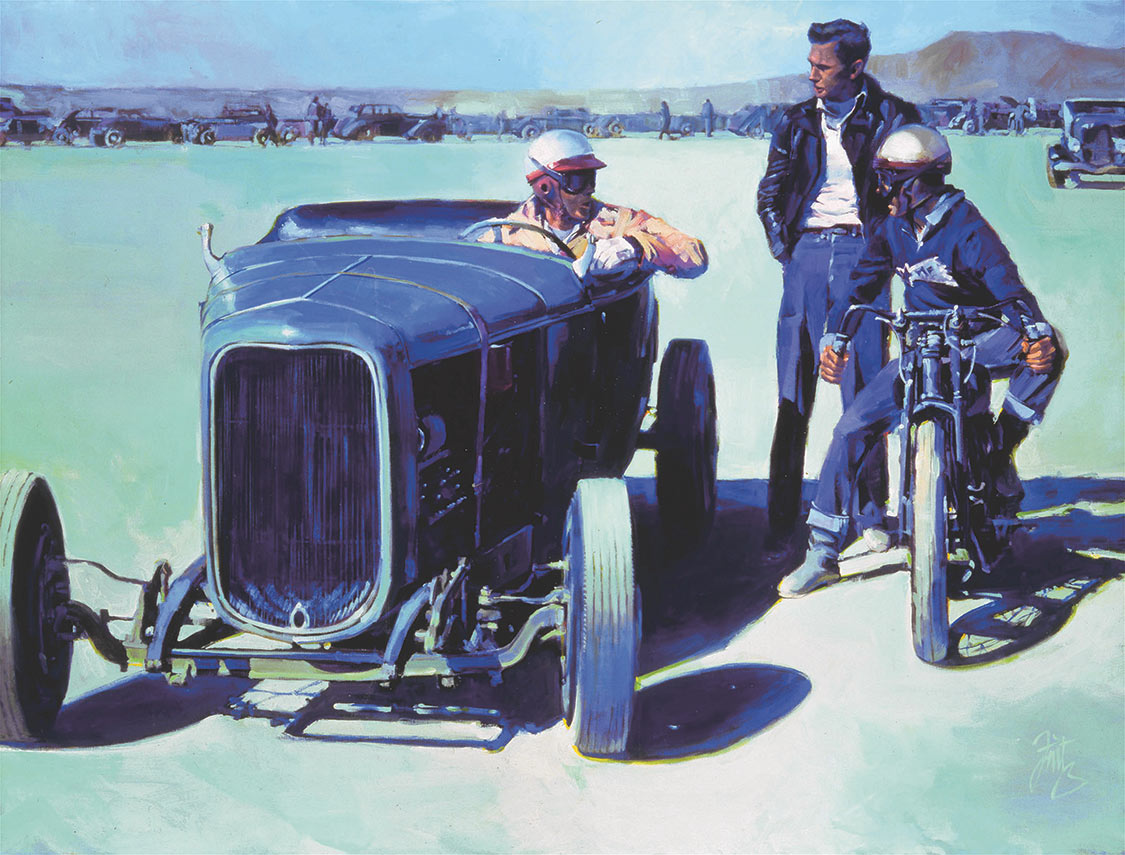
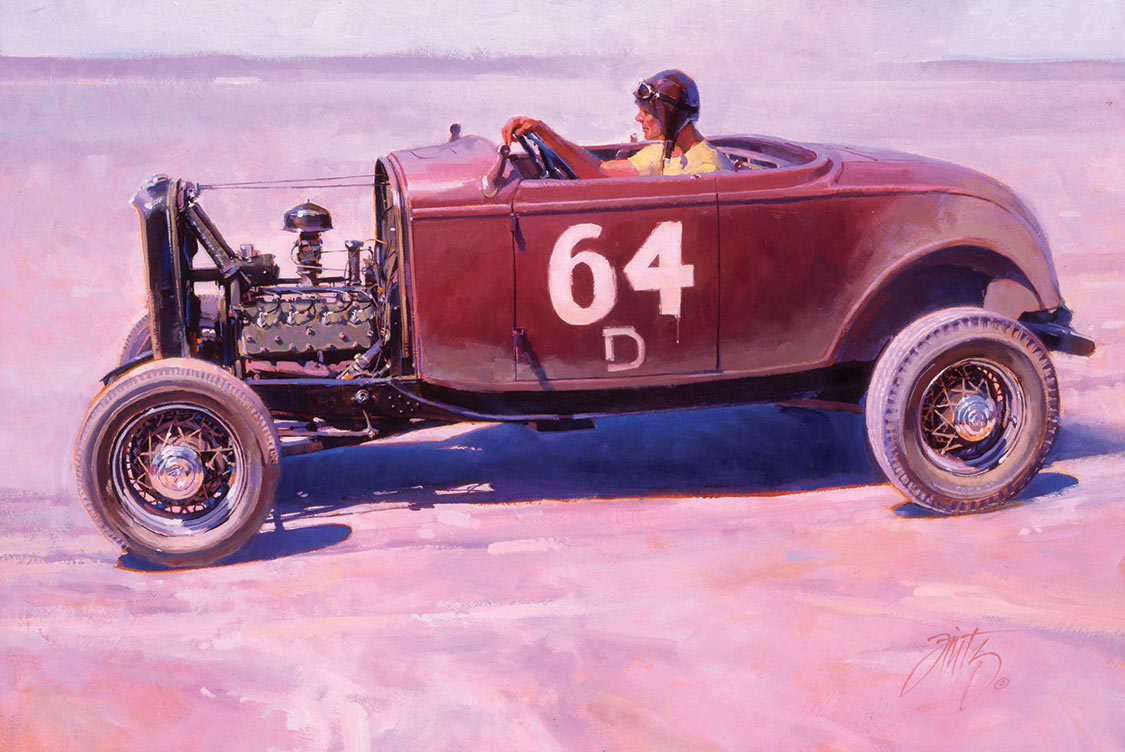
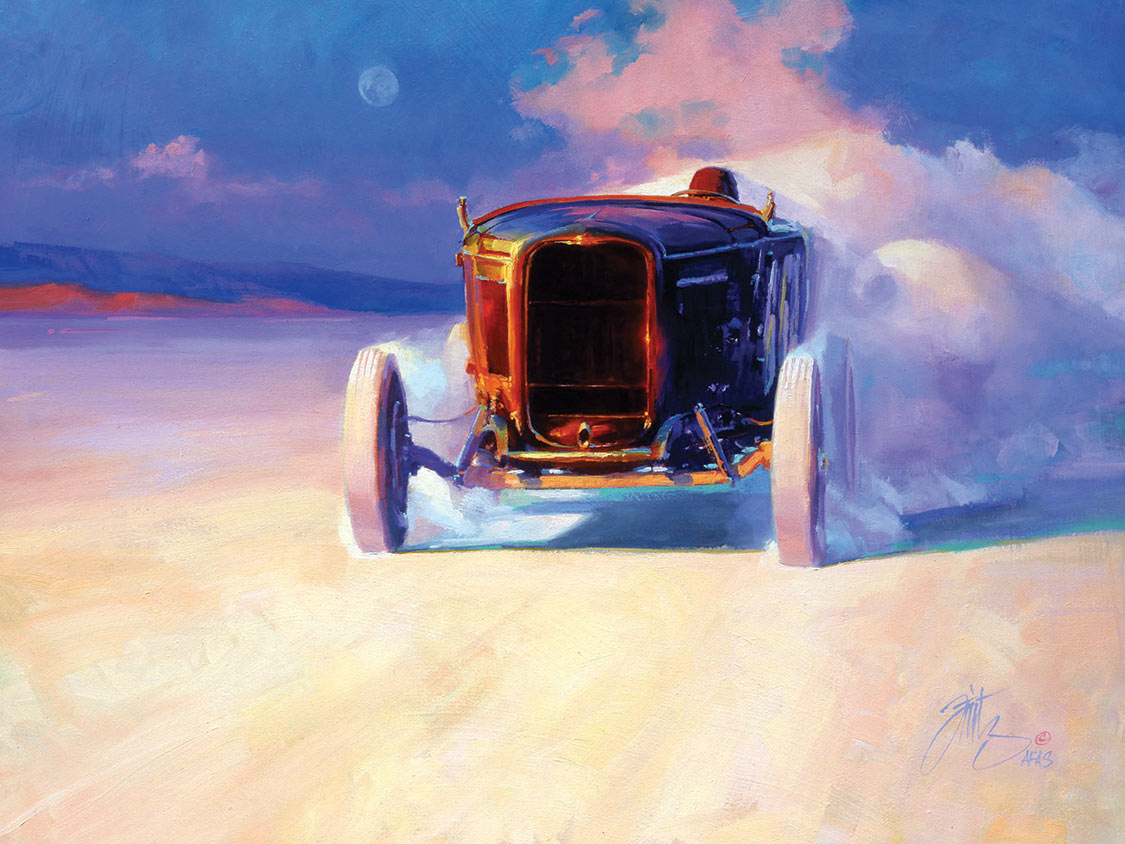
Fritz has a knack for taking a car and creating his own background; oftentimes, at a dry lake bed or on the salt, and then he sets the mood for the painting with his own ideas on light sources, quality of light, clouds, composition, perspective and to get the vehicle in its absolute best possible angle, point of view to showcase the lines of the body to the maximum level. He takes some artistic license; however, it’s all done with realistic shadows and to lifelike scale. While most of his work never really happened in real life, it all could have!
Education was a topic that kept coming up when talking with Fritz, and his advice to any young kid who really wants to take their car art to its maximum potential is to get educated, educated about art, learning all of the fundamentals, “Learn how to draw, learn about color theory, learn about how to paint, the chemistry that goes behind it,” said Fritz. “Study art history. Artists have spent centuries discovering how art ‘works.’ Learn about it, that way it gives you a basis for you to start. An art school can guide you.”
I’m still waiting to grow up, still like to draw cars. I was doing this stuff when I was a kid on scraps of paper, and they would choke up my desk drawer…

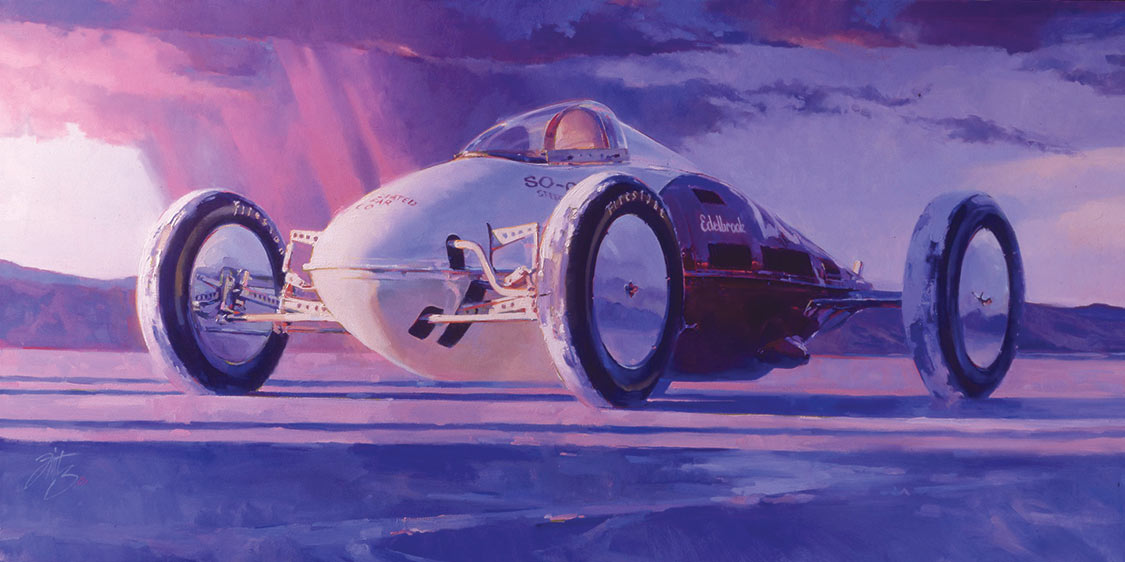
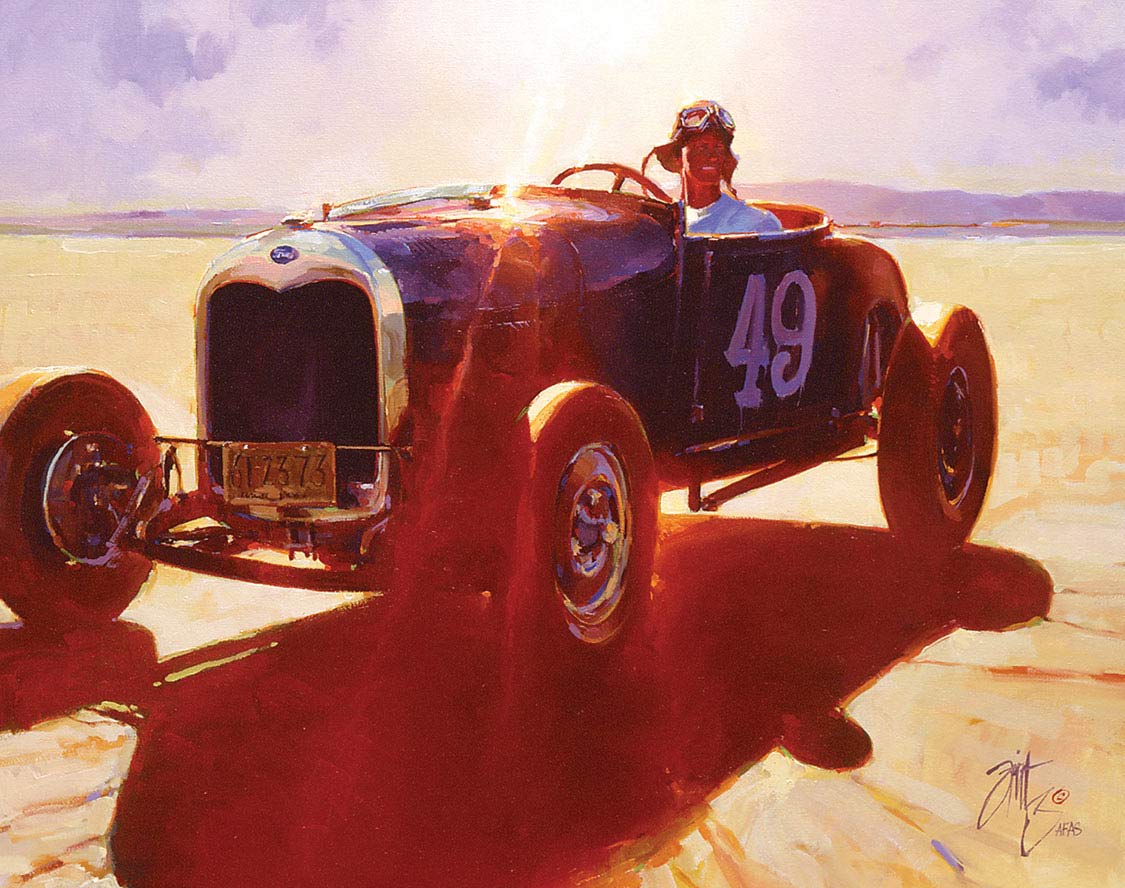
It’s said that his work takes a very uncontrived and unique approach to the wonderful relationship between man, machine and power, all done in beautiful colors and with the soft edges of impressionism. His canvas creations have caught the attention of some impressive clients, including the Ford Motor Company, Harley-Davidson Motor Company, General Motors, PPG, NHRA, Hot Rod Magazine, AAA, Motorsport Aftermarket Group (MAG), Custom Chrome, Inc., Red Bull, Bob Drake Reproductions and numerous other corporations, companies and museums, as well as private commission work. When visiting any U.S. Post Office you’re bound to see some more of Fritz’s work in the way of a series of iconic muscle cars he painted on special assignment from the USPS. Movie buffs are sure to recognize his style in the posters he’s done for the “Deuce of Spades” movie and for “On any Sunday—The Next Chapter.” He’s been honored for his work by being selected to do the art for the Amelia Island Concours d’Elegance, plus he’s won the top honors for automotive art at the prestigious Pebble Beach Concours d’Elegance annual gathering, held in Carmel, California. He was chosen a record seven times! Fritz Art brushwork can be found in many private, corporate and public collections around the world, and the multi-award-winning artist has a website showcasing his work, Fritzart.com.
